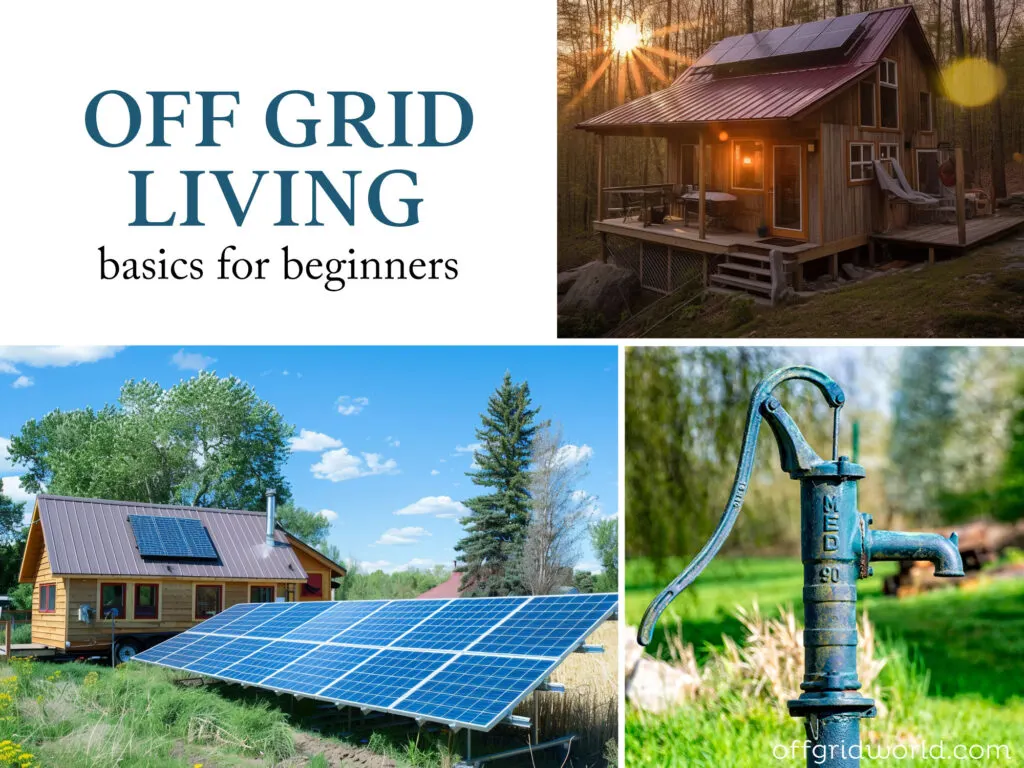Off-grid living has gained popularity as a lifestyle focused on self-sufficiency and minimizing reliance on public utilities. This approach involves creating a living environment that operates independently from the electrical grid, water supply, and sewer system that are part of centralized municipal services. Off grid enthusiasts often pursue it to reduce their carbon footprint, seek a simpler way of life, or to enhance their preparedness for varying circumstances. But how do you start if you’re a beginner?
Despite the allure of freedom and sustainability, transitioning to an off-grid lifestyle requires careful planning, a willingness to learn new skills, and adaptability. The journey to a successful off-grid life encompasses understanding local regulations, sourcing the right technology, and constructing systems for energy, water collection, and waste management.
As more people are drawn to the idea of forging a life untethered from traditional utilities, they also embrace the challenges and rewards that come with this unique way of living. Are you ready to go off grid? Let’s get into some of the basics!
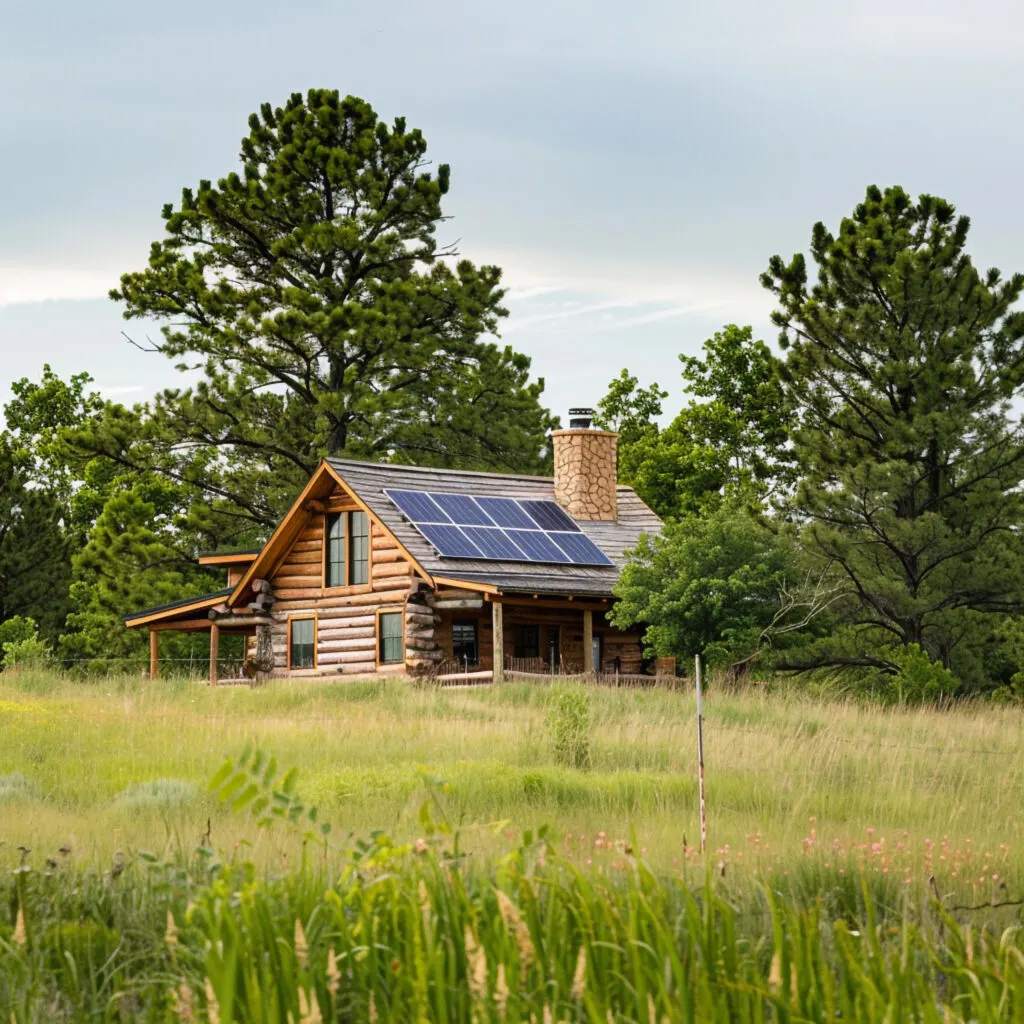
Understanding Off Grid Living
Beginning an off-grid lifestyle involves a commitment to self-sufficiency and a conscientious approach to resource use. It requires thorough preparation and an understanding of the lifestyle’s benefits and inherent challenges.
While we are big proponents of “living off the grid” in as many areas of life as possible, no matter your current living situation, it traditionally means residing in a manner that does not rely on the public utility infrastructure.
Choosing to live off the grid means you’ll establish independent systems for energy, water, and waste management. This independence commonly involves the use of renewable energy sources such as solar panels, wind turbines, or micro-hydropower systems.
A key characteristic of off-grid living is its emphasis on sustainability and reducing environmental impact by minimizing reliance on non-renewable resources.
Benefits of Living Off the Grid
The benefits of adopting an off-grid lifestyle can be substantial. Some of them include:
- Environmental impact: Reduction in carbon footprint due to decreased dependency on fossil fuels and more sustainable living practices
- Self-sufficiency: Enhanced self-reliance through managing your own utilities and resources
- Connection with nature: Strengthened relationship with the environment by living more closely with natural cycles and resources
Living off-grid allows you to tailor your living situation to your environmental values and personal aspirations for autonomy. It’s a great way to live a comfortable, sustainable life on your terms.
Challenges of Living Off the Grid
Despite its appeal, off-grid living comes with its set of challenges. Here are some to consider:
- Climatic dependencies: Requires adaptive solutions to harness natural resources year-round
- Initial costs: Upfront investment in renewable energy infrastructure and land may be significant
- Maintenance: Ongoing effort and knowledge are needed to keep systems running efficiently
- Legal regulations: Navigating zoning laws and building codes can be complex and location-specific.
As you consider moving to a lifestyle off the grid, you’ll need to assess these considerations carefully to ensure you are fully prepared for all aspects of the lifestyle change.
Now, let’s get into some of the essentials you’ll have to consider when choosing a life off the grid, starting with choosing a location.
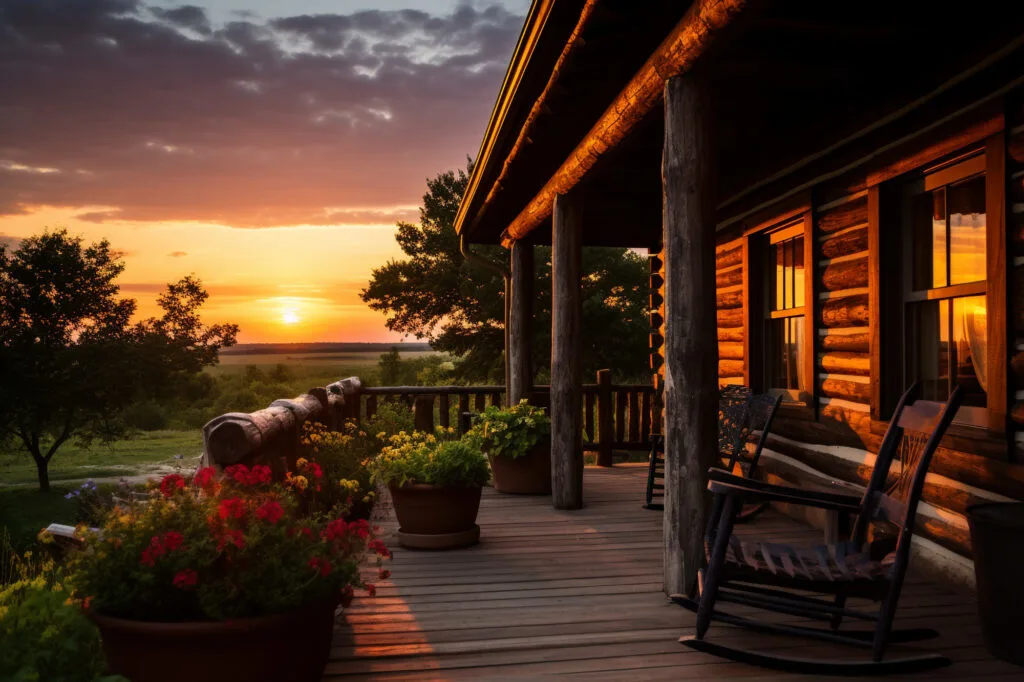
Selecting a Suitable Location
Selecting the right location is a foundation for success when embarking on the journey to living off the grid. Careful research into climate conditions, accessibility to natural resources, and adherence to legal requirements will ensure a well-suited choice and prevent problems along the way.
You’ll want to consider your lifestyle and whether or not you need relatively easy access to certain amenities like schools or medical facilities since some locations will be much more remote or more difficult to access than others.
Researching Climate and Land
Climate has profound implications when choosing a location because it directly affects which energy systems you can choose and the viability of growing your own food. You should analyze historical weather patterns, such as precipitation levels and temperature ranges, when considering land for your off grid homestead.
Land characteristics contribute to the feasibility of construction, agriculture, and waste management options like septic tank installation. When looking for land, factors like soil quality and topography should also be thoroughly evaluated for these reasons.
- Climate consideration: Match building materials and energy sources to weather conditions
- Land attributes: Ensure soil is fertile and topography is adequate for your energy, waste, water, and housing needs
Accessibility to Natural Resources
Living off the grid requires direct access to natural resources such as water and energy sources. Locations near a river, lake, or spring provide a water supply, or a location may be suitable for digging a well.
Open areas might offer the potential for solar power or wind turbines. A balance between remote location benefits and the practicality of the location must be considered if you want to enjoy your self-sufficient homestead to its fullest.
- Water resources: Proximity to reliable water sources is essential
- Energy potential: Availability for solar, wind, or hydropower installations
Legal Requirements and Building Codes
Compliance with legal requirements and building codes is mandatory in most places. It is important to understand the local laws that govern land use, construction, and self-sufficiency methods. Research into zoning requirements, environmental regulations, and building codes will prevent future legal complications and could prevent you from wasting a considerable amount of time and money.
- Zoning laws: Determine what structures and activities are permitted
- Environmental regulations: Familiarize yourself with protections on water and land use
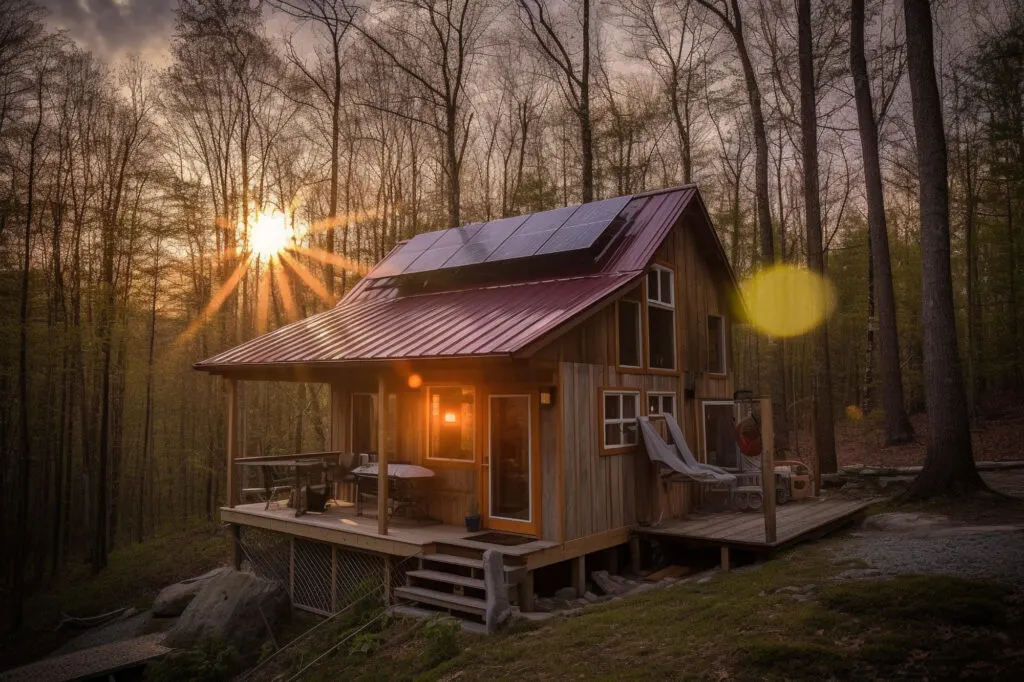
Building Your Off-Grid Shelter
Building a shelter off-grid requires careful consideration of the materials used and the design to ensure efficiency and sustainability. Your choice in shelter, whether it’s an RV, yurt, log cabin, or tiny home, affects not only your comfort but also how you interact with the environment.
When considering the type of home you want to set up, be sure to check local building codes to avoid unnecessary delays and hassle.
Construction Materials and Techniques
There are endless options for off-grid homes, depending on your property, lifestyle, and budget. Many people start with one type of home (an RV, for example) while building a more permanent residence.
Here are some popular off grid home options:
- RV: An RV offers mobility and immediate shelter without the need for construction, though they are not typically designed for permanence or high energy efficiency
- Yurt: Traditionally made with lattice walls and felt insulation, modern yurts can incorporate high-tech materials for better durability and insulation
- Log cabin: A classic choice and popular option for living off grid, log cabins require sturdy timber and skilled craftsmanship
- Tiny house: Tiny houses are versatile, often built on trailers for mobility, and can use a variety of materials from traditional wood to modern, lightweight composites
- Earthship: These are sustainable homes made from natural and recycled materials, featuring passive solar design, natural and mechanical ventilation, and integrated water collection systems
- Cob house: Constructed from a mixture of clay, sand, straw, and water, cob houses are eco-friendly and can be sculpted into organic shapes, providing excellent thermal mass and insulation
- Shipping container home: With the right skills and materials, upcycled shipping containers provide the ideal framework for a small home on a budget
When choosing construction materials to build a home, you should consider:
- Local availability: Utilizing local materials reduces transportation costs and environmental impact
- Sustainability: Renewable resources like bamboo or recycled materials reduce your carbon footprint
- Durability: High-quality materials ensure the longevity of your shelter, reducing the need for frequent repairs
Designing for Efficiency and Sustainability
The design phase off your off grid home is important, especially when it comes to achieving energy efficiency. By maximizing the use of natural light, you can significantly reduce the need for artificial lighting during the day.
Incorporating elements of thermal mass, such as concrete floors or walls, can help stabilize indoor temperatures by absorbing heat during the day and releasing it at night, thus reducing the reliance on heating and cooling systems. Additionally, effective insulation is essential for maintaining a comfortable indoor environment without excessive energy use.
Water and waste management are critical aspects of sustainable living and should be considered while your home is in the design phase. Implementing rainwater catchment systems can provide a substantial portion of a household’s water needs, from irrigation to plumbing, with proper filtration and purification.
Composting toilets offer an eco-friendly solution to waste management, transforming human waste into compost that can enrich the soil without the need for a traditional septic system. Both of these systems play a significant role in minimizing a home’s environmental impact by conserving water and reducing pollution.
Lastly, the integration of renewable energy sources into the design of a home is essential for true sustainability. Solar panels, wind turbines, and micro-hydro systems are viable options for electricity generation, depending on the geographic and climatic conditions of the site.
These renewable energy systems can significantly reduce dependence on fossil fuels, lower utility bills, and provide a more sustainable and self-sufficient lifestyle.
Considerations when planning your home:
- Energy efficiency: Maximizing natural light, incorporating thermal mass, and using insulation are key for maintaining temperature without excessive energy use
- Water and waste infrastructure: Planning for rainwater catchment systems and composting toilets can greatly reduce your environmental impact
- Renewable energy: Solar panels, wind turbines, or micro-hydro systems should be considered for electricity generation
- Overhangs and shade structures: To control solar heating and reduce cooling needs
- Orientation: Positioning the shelter to take advantage of passive solar heating in cooler climates and to avoid overheating in warmer climates
- Cross ventilation: Allowing for natural cooling through strategic placement of windows and vents
The design and materials used in building your home are intrinsically linked to the sustainability and efficiency of your off-grid lifestyle. A well-planned shelter that adheres to best practices in construction and energy use provides a comfortable living space and minimizes the impact on the environment.
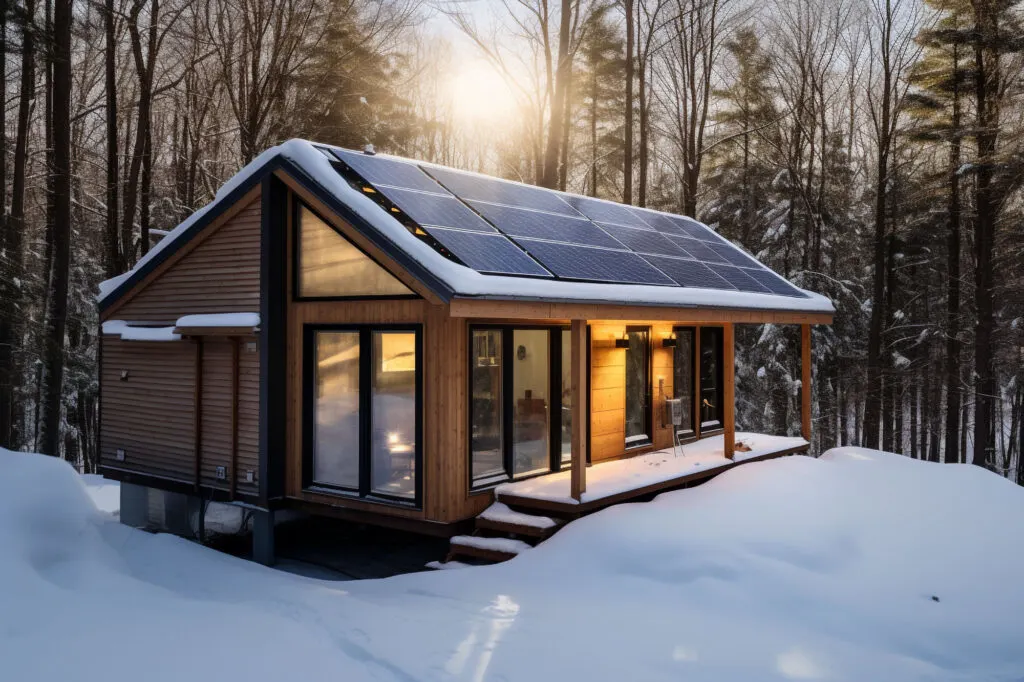
Setting Up Your Energy Systems
Establishing your own power system is vital when embracing a life off the grid. You’ll need to assess energy requirements and invest in appropriate renewable energy sources to ensure a consistent power supply.
Solar and wind systems are the most popular options. The initial cost of your system will vary depending on what type of system you choose, and you might find that a combination of systems will work best for your situation.
Solar Power Systems
Solar power systems harness energy from the sun, providing a reliable source of electricity. Not every location will be suitable for solar energy; a hybrid approach and backup power may be necessary.
Basic components:
- Solar panels: Photovoltaic panels convert sunlight into electricity
- Inverter: Converts direct current (DC) to an alternating current (AC) usable by home appliances
- Battery Bank: Stores excess energy for use during non-sunny periods
When delving into the realm of solar power systems, there are several considerations to ensure you get the most out of your investment. The first step is to meticulously calculate your household’s energy consumption. This calculation directly influences the number and size of panels you will need for your solar system.
Additionally, the orientation and location of these panels are paramount for harnessing maximum sunlight exposure. The positioning of your panels should be strategic, taking into account the path of the sun across the sky and any potential obstructions like tall trees or buildings that could cast a shadow. Optimal placement is typically on a south-facing roof in the Northern Hemisphere and vice versa in the Southern Hemisphere.
Moreover, while solar power systems are celebrated for their relatively low maintenance requirements, this does not mean they are maintenance-free. Regular cleaning of the panels can significantly increase their efficiency. Dust, debris, and bird droppings can accumulate on the surface, hindering the panels’ ability to absorb sunlight. Therefore, periodic cleaning, especially in dusty or particularly bird-populated areas, can make a noticeable difference in your system’s performance.
Wind Energy Options
Wind turbines efficiently generate power in diverse weather conditions whenever the wind blows, making them an excellent complement to solar systems in many locations.
Basic components:
- Turbines: Convert wind power into electricity
- Tower: Elevates the turbine to reach higher wind speeds
- Generator: Transforms the mechanical energy from the turbine into electrical power
- Inverter: Converts the generated electricity from DC to AC for use in home appliances
There are several important considerations to keep in mind when considering a wind energy system. The effectiveness of wind turbines is highly dependent on your location’s average wind speed. Ideally, areas with average wind speeds above 12 miles per hour are most suitable for installing a wind turbine. This is because such wind speeds can consistently generate sufficient power, making the investment more viable.
Before installation, it’s imperative to be aware of the local zoning regulations. Obtaining zoning approval can be a significant part of the process, as wind turbines can be subject to various restrictions based on their height, noise level, and location.
Additionally, the initial investment for a wind energy system can be substantial. This includes not just the cost of the turbine itself but also installation and integration into the existing power system. However, the long-term benefits often outweigh these initial costs, especially if you’re in an area with consistently high wind speeds.
As with all energy systems, regular maintenance is necessary for optimal operation. While these systems are generally robust, routine checks and upkeep are necessary to ensure they function efficiently and safely over time. This involves inspecting the turbine blades, bearings, and electrical connections, among other components, to prevent any potential issues and to maintain the system’s efficiency.
Alternative Energy Sources
In addition to solar and wind, other renewable energy sources might be suitable based on your location and energy needs.
Options Include:
- Micro-hydro power systems for properties with a stream or river
- Biomass generators that use organic materials
- Geothermal systems in areas with suitable underground temperatures
Choosing the right energy system depends on several important factors. As we mentioned, the local climate and topography play a pivotal role in determining which renewable energy sources are most viable. For instance, a sunny, open area is ideal for solar panels, while a windy hilltop might be better suited for a wind turbine. Hydropower can be a great option if your home will be near running water.
Understanding your household’s specific energy demands is also important. This involves assessing not just the amount of energy used but also when it is used, as this can affect the type and size of the system needed.
In many cases, opting for a combination of energy sources can be the best way to ensure a more consistent and reliable power supply, which is especially important when living off the grid. Having a backup plan, like a generator, is also a good idea in case of power outages.
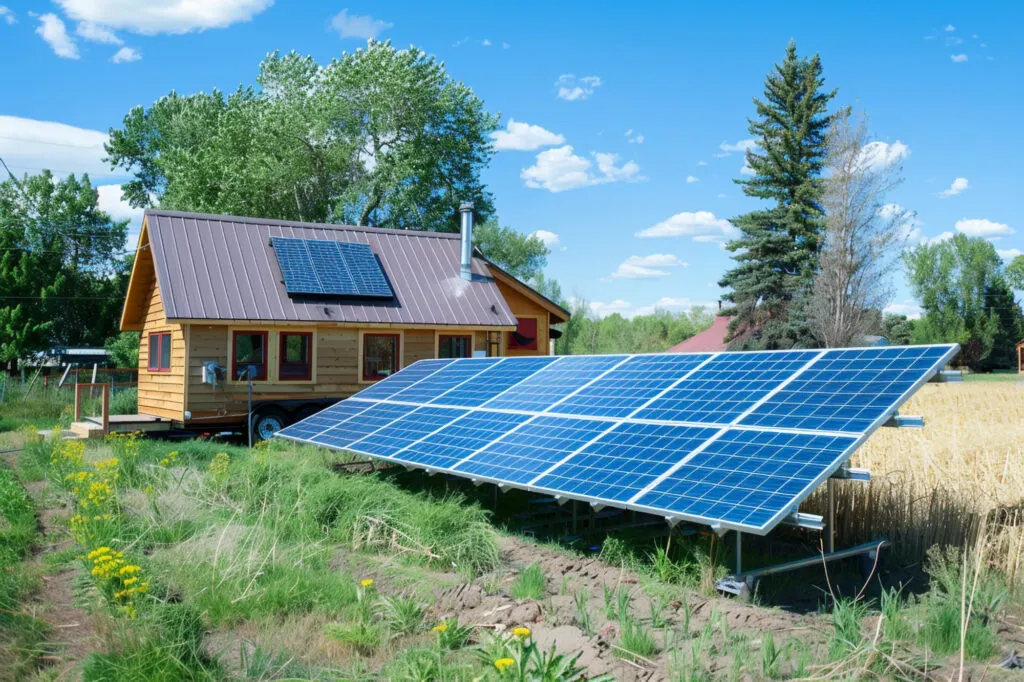
Water Sourcing and Management
Securing a reliable water supply is essential when you’re planning your off grid home. There are several ways to do this, and which you choose will depend on your climate and the resources available on your property.
Rainwater Harvesting
Rainwater harvesting involves collecting and storing rainwater, typically from roofs, and directing it into storage tanks. This method usually requires installing gutters with filtration systems to ensure debris-free collection.
Basic components:
- Catchment area: Usually the roof of a building
- Gutters and downspouts: Channels the rainwater from the roof to the storage system
- First flush diverter: Ensures that the initial rainwater, which may contain impurities from the catchment surface, is diverted away from the storage tank
- Storage tanks: Where the harvested rainwater is stored
- Filtration system: Filters the harvested water to remove debris and contaminants
- Delivery system: Includes pumps and pipes that deliver water from the storage tanks to where it is needed
There are a few important factors to keep in mind when considering a rainwater harvesting system. First, the size and material of the catchment area. Typically, the catchment is the roof of your home or a shed, though some off-gridders build special structures for the sole purpose of catching rainwater if they have higher water needs. The area should be made of non-toxic, durable materials to maintain water quality.
The design of gutters and downspouts is also vital as they transport water to the storage tanks. These should be regularly cleaned to prevent blockages.
The heart of the system lies in the storage tanks. These tanks must be appropriately sized based on the catchment area and the household’s water needs. Dark, sealed tanks are recommended to prevent algae growth and contamination. They should be made of food-grade material, dark in color to prevent algae growth.
The filtration system is very important if the water is intended for domestic use. The complexity of the filtration systems can vary based on your intended use. Simple mesh filters are fine for garden use but if you’ll be using rainwater for consumption and household needs, you’ll want to opt for more sophisticated systems.
Wells and Running Water
Wells and running water sources are popular and reliable options for a water supply if your property has the proper access.
Components of well water systems:
- Well casing: A tube that lines the well hole, preventing contamination and collapse
- Well pump: Brings water from the well to the surface; can be submersible or above-ground
- Pressure tank: Stores pressurized water to ensure a consistent flow and reduce pump cycling
- Water filtration system: Removes impurities, ensuring the water is safe for consumption
- Electrical system: Powers the well pump and any electronic monitoring systems
Wells are the most common water source for those living in rural areas. When setting up a well water system, the location and depth of the well are important factors, as they determine both the water quality and the cost of drilling. Conduct a geological survey and consult local water table data to ascertain if a property is suitable for a well. This will also help in determining the required depth of the well for adequate water supply.
Compliance with local regulations and obtaining the necessary permits is mandatory before digging wells. Regular maintenance, including periodic testing of water quality, is vital to ensure the well’s safety and longevity. Additionally, the choice of pump and the filtration system design depend on the household’s specific needs and the water source’s characteristics.
Components of running water systems:
- Intake structure: Captures water from a natural source like a stream or river
- Sediment filter: Removes larger particles and debris from the water
- Water filtration and purification system: Ensures the water is safe for consumption
- Storage tank: Holds the water for use, helping to manage supply during low-flow periods
- Distribution system: Pipes and pumps that deliver water to the home
Utilizing a running water source requires careful planning. The quality and sustainability of the water source are paramount; it’s important to ensure that the use does not negatively impact local ecosystems. Legal considerations, including water rights and environmental regulations, must be thoroughly explored.
Like well water systems, running water systems also need regular maintenance and water quality testing. The choice of filtration and purification systems should be based on the specific characteristics of your water source.
Both wells and running water sources require initial investment and ongoing maintenance. Regular testing of water quality is crucial to safeguard against contaminants and to maintain a healthy and sustainable water supply.
These off-grid water solutions offer independence from municipal systems, aligning well with sustainable living goals and providing a sense of self-sufficiency. However, they also demand a significant level of commitment and responsibility to manage and maintain effectively.
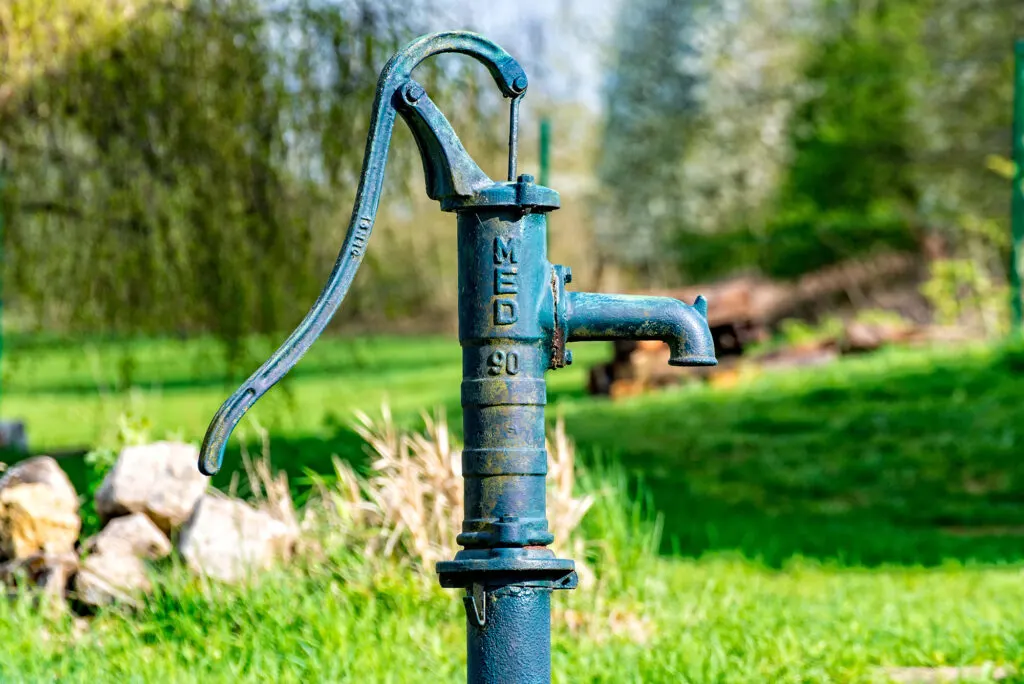
Food Production and Preservation
Efficient food production and preservation are central components of a successful off grid homestead. This will empower you to achieve self-reliance and ensure a continuous supply of food throughout the year since you likely won’t be living near modern conveniences like grocery stores.
Starting a Garden and Raising Livestock
Gardening is a fundamental practice for food production on any homestead. Beginners should focus on growing food that suits local soil and climate conditions. Utilizing companion planting can enhance growth and protect crops from pests. Key vegetation to consider include vegetables, herbs, and fruit-bearing plants for a well-rounded diet.
Livestock such as chickens can be relatively low-maintenance and provide a steady source of eggs and meat. They require proper housing, protection from predators, and consistent food and water. Beginners may start with a small flock to manage workload and resource allocation effectively. As your homestead grows, you can add more livestock varieties.
Key points for food production for beginners:
- Start simple: Focus on easy-to-grow crops and a small number of livestock to manage resources and workload effectively
- Local conditions: Choose plants and animals that thrive in your area’s climate and soil, maximizing success and yield
- Companion planting: Use this method to boost plant growth and reduce pests naturally, enhancing your garden’s productivity
- Diverse diet: Grow a variety of vegetables, herbs, and fruits, and raise different types of livestock to ensure a balanced diet
- Protection: Ensure proper housing for livestock to protect them from predators and extreme weather conditions
- Sustainability: Implement sustainable practices like composting and water conservation to support your food production efforts long-term
- Learn and adapt: Start small, learn from experience, and gradually expand your gardening and livestock efforts as you gain confidence and expertise
Foraging and Hunting
Foraging for wild edibles offers additional dietary variety and a connection with the natural surroundings. It’s essential to have a clear knowledge of local plant species to avoid toxic or endangered varieties. Commonly foraged items include berries, nuts, and mushrooms.
Hunting provides another source of meat, supplementing what you raise on your homestead. Successful hunting requires an understanding of local wildlife habits and sustainable practices to avoid overharvesting. Local regulations must be studied and adhered to for those new to hunting, and appropriate training should be undertaken for safety and effectiveness.

Waste Management Techniques
Effective waste management is crucial for maintaining a sustainable and environmentally friendly off-grid lifestyle. Off-grid living necessitates thoughtful disposal and treatment of waste to prevent pollution and conserve resources.
Composting and Recycling
Composting is a fundamental component of waste management in off-grid living. Organic waste, such as food scraps and yard trimmings, can be transformed into nutrient-rich soil through composting processes. It is essential to understand the balance of carbon-rich “browns” like dried leaves and nitrogen-rich “greens” such as kitchen waste to create a successful compost pile.
There are various composting methods you can try, but remember, it does not have to be complex; a pile in a corner of your garden that you occassionally turn with a pitchfork will suffice.
To facilitate composting, a homeowner may use various methods:
- Stationary bin systems: Can be homemade or purchased and typically require manual turning of the compost
- Tumbler systems: Easier to turn, and they often expedite the composting process
- Worm bins: Utilize red wriggler worms to break down waste and produce vermicompost, an incredibly rich soil amendment
Recycling goes hand-in-hand with composting, focusing on repurposing items rather than disposing of them. For items you can’t reuse or upcycle, be aware of recyclable materials and local facilities that accept them to reduce your waste output. Also check local regulations to ensure you are following proper waste disposal guidelines.
Septic System Considerations
A septic system is usually the go-to solution for wastewater management in areas without access to municipal sewer services. An efficient septic system treats and disposes of both blackwater from toilets and gray water from sinks, showers, and appliances.
Key considerations for septic systems include:
- Size and design: Must be properly sized for your household to prevent system overload
- Maintenance: Regular inspections and pumping are necessary to ensure functionality and longevity
- Proper use: Avoiding the introduction of harmful chemicals and non-biodegradable items can prevent damage to the system
In some situations, a composting toilet provides an alternative to traditional septic systems. These toilets decompose waste on-site without the need for water, which makes them suitable for areas where water is scarce or septic systems are not feasible. Proper ventilation is essential to control odor and encourage aerobic decomposition of waste within composting toilets.
Managing gray water can also be an integral part of waste management. Gray water systems allow for the treatment and reuse of water from sinks and showers, either for irrigation or, with more advanced treatment, for reuse within the household. Regulations vary by location, and it’s essential to comply with local codes when installing gray water systems.
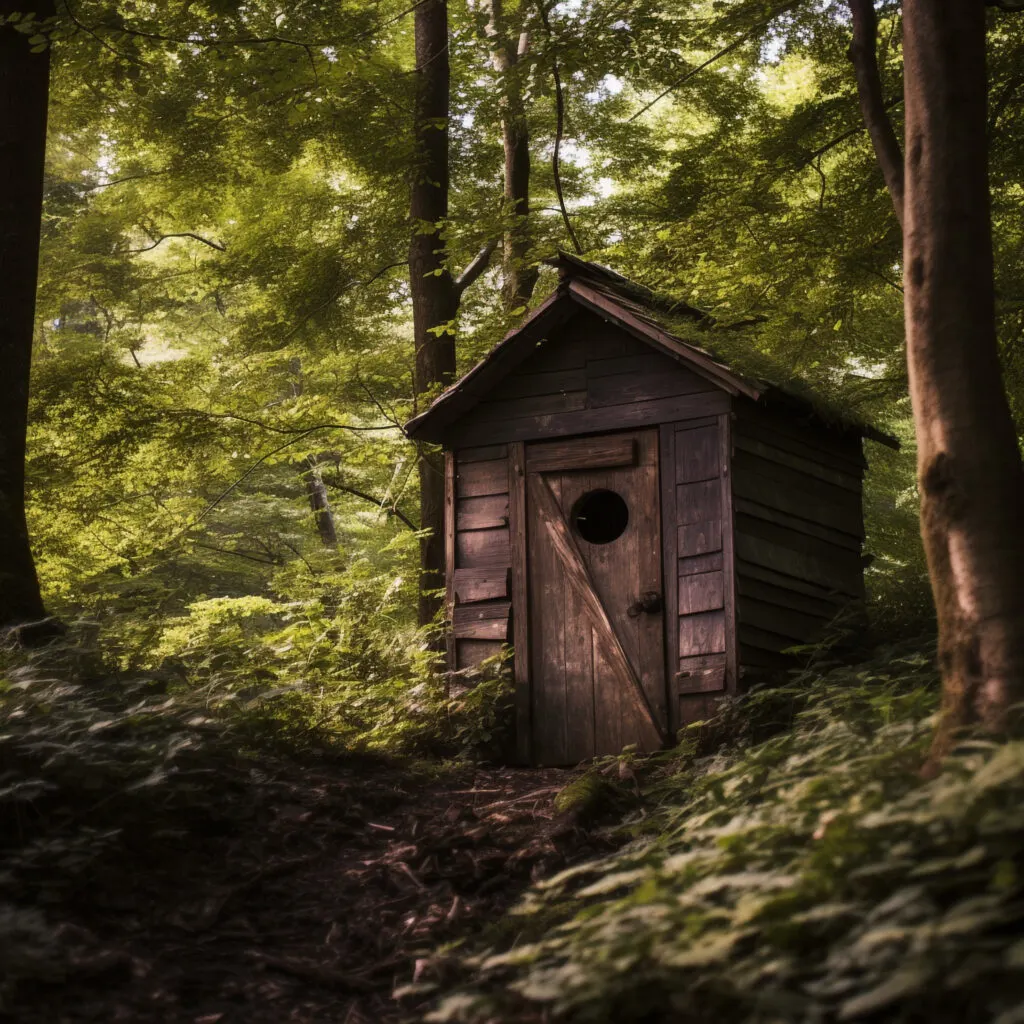
Off-Grid Power Storage and Distribution
When living off-grid, managing power storage and distribution is important for a steady and reliable power supply. This involves selecting suitable batteries and backup systems, alongside designing an efficient electrical infrastructure to power appliances.
Batteries and Backup Systems
The heart of any off-grid energy system lies in its ability to store excess power. Batteries such as deep-cycle lead-acid or more advanced lithium-ion varieties are widely used. They store the electricity generated by renewable sources, like solar panels or wind turbines, ensuring power is available when production is low. Here is an essential checklist for selecting batteries:
- Capacity: Measure in kilowatt-hours (kWh) to match daily energy usage
- Depth of Discharge (DoD): Percentage of battery capacity that has been used
- Life cycle: Number of charge/discharge cycles a battery can undergo before reaching a specified capacity reduction
Backup systems, typically generators powered by fuel, offer a secondary source of electricity during prolonged periods of low renewable energy production or unusually high power demands. You should ensure you have an adequate supply of fuel for generators, considering storage safety and potential expiration of fuel over time.
Electrical Infrastructure and Appliances
The success of off-grid living also hinges on a suitably designed electrical infrastructure. All components should be rated for off-grid application, from wiring and inverter systems to the outlets in use. It’s key to prioritize energy efficiency in selecting appliances to minimize overall energy consumption.
To summarize the infrastructure needs in simple terms:
- Match inverter size to peak power demands
- Utilize energy-efficient appliances to reduce load
- Include proper fusing and disconnects for safety
By focusing on both effective power storage options and a well-designed electrical infrastructure, you can enjoy a level of electricity reliability that supports a comfortable and sustainable lifestyle.
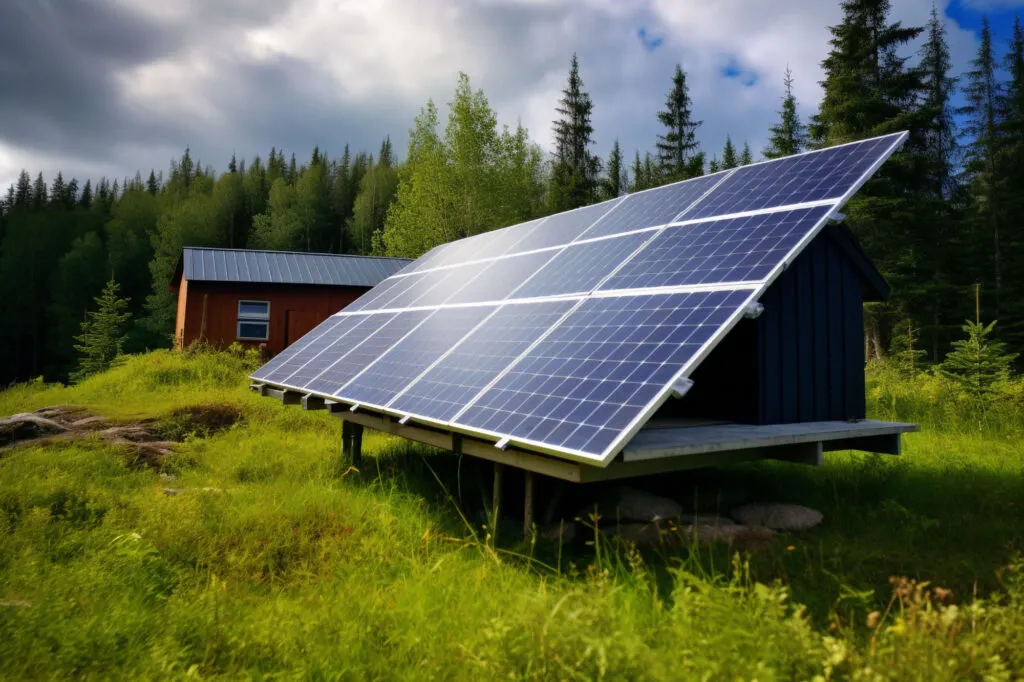
Developing Essential Skills
For beginners embracing a life off the grid, developing a set of essential skills is imperative. These skills ensure self-reliance and enhance the ability to maintain and manage an off-grid home effectively. Here, we will focus on the skills needed for basic construction, maintenance, and safety.
Your proficiency in carpentry plays an important role when living off the grid. It includes understanding framing techniques, roofing, and insulation, essential in creating and maintaining structures that are both durable and energy-efficient. Knowledge in using tools like saws, hammers, and drills is essential for constructing and repairing the structures on your property.
In an off-grid setting, plumbing skills allow you to set up systems for clean water access and effective wastewater disposal. Installing pipes, fixing leaks, and understanding water filtration become valuable skills.
Basic electrical skills come into play when setting up solar panels or generators, which are common electricity sources in off-grid living. Safely managing wiring and understanding energy consumption contribute to a sustainable lifestyle.
If you lack these skills, you can always trade skills with a community of like-minded individuals. If you thrive at growing food but electrical work is not your cup of tea, see if you can trade homegrown goodies for your neighbor’s electrical expertise.
First Aid and Emergency Preparedness
First Aid knowledge is absolutely essential when living off the grid, as medical help may not be always readily accessible. Being able to treat cuts, burns, and other common injuries can be lifesaving. Emergency preparedness encompasses survival skills, like fire starting, navigation, and shelter-building, which are important when facing unexpected situations.
By mastering these skills, you become more competent in dealing with the day-to-day challenges of off-grid living while building resilience against emergencies.

Lifestyle Planning and Management
Embarking on a life off the grid demands meticulous financial planning, the establishment of reliable routines, and an engagement with educational resources to ensure a seamless transition. Navigating these aspects strategically is vital for sustaining a lifestyle that is both fulfilling and viable long-term.
Financial Considerations
Creating a comprehensive budget is the foundational step in off-grid living, encompassing the upfront costs of acquiring land, constructing housing, and installing your essential systems like solar panels and water filtration. This budget should also account for recurring expenses, including maintenance needs and property taxes, to ensure financial stability.
Additionally, setting aside a savings reserve for unforeseen expenses can provide a financial safety net. Adopting a minimalist lifestyle further supports financial health by focusing spending on necessities rather than wants, thereby keeping costs within manageable limits and reducing economic pressure.
Creating Reliable Routines
The establishment of daily and seasonal routines is integral to a successful off-grid lifestyle, promoting both productivity and personal fulfillment. A consistent morning routine could involve monitoring solar battery levels and water supplies, while evening routines might focus on securing livestock and preparing for the following day.
Seasonal activities, such as crop planting, harvesting, and food preservation, as well as home preparation for changing weather conditions, also need to be factored into your routines.
Education
Education plays a pivotal role in mastering off-grid living. A broad spectrum of books and online resources provides invaluable insights into various techniques, including sustainable farming practices and renewable energy systems.
Additionally, the internet offers a wealth of online resources—articles, blogs, and instructional videos—that deliver guidance and contemporary information on off-grid living strategies. (Yes, you CAN live off the grid and still have access to the internet!) Participating in workshops or courses can offer hands-on experience and practical knowledge, further empowering individuals to thrive in their off-grid endeavors.
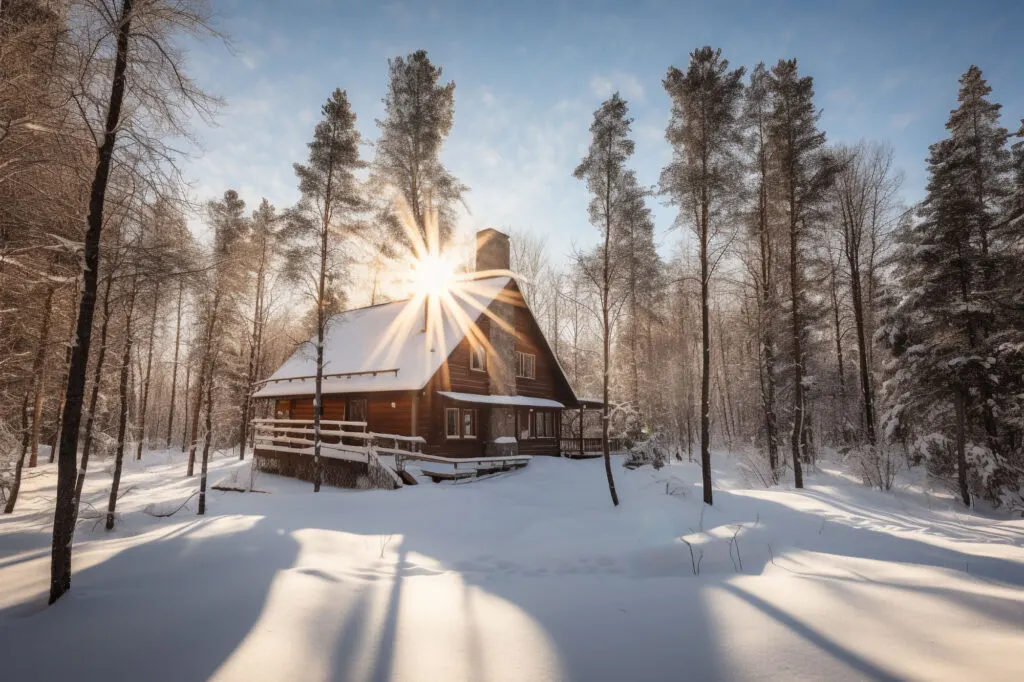
Final Thoughts & Resources
Embarking on an off-grid lifestyle is a journey that demands careful planning, resilience, and a willingness to learn. While it might seem overwhelming, you can start small and work your way up to your ideal off grid homestead. It will require hard work and diligence, but escaping the bustle of city life to enjoy a sustainable, self-reliant lifestyle will be worth it in the end. Here are some additional resources you might find helpful:
- Off Grid Septic System and Wastewater Treatment
- Everything You Need To Know About Living Off The Land
- Off Grid Security: How to Keep Your Home Safe While Living off the Grid
- A Guide to the Best Off Grid Heating Options
- Off Grid Homes: Revolutionizing Sustainable Living
- On Grid vs Off Grid Solar: A Power System Comparison
- What is a Victory Garden? Growing Sustainable Food
